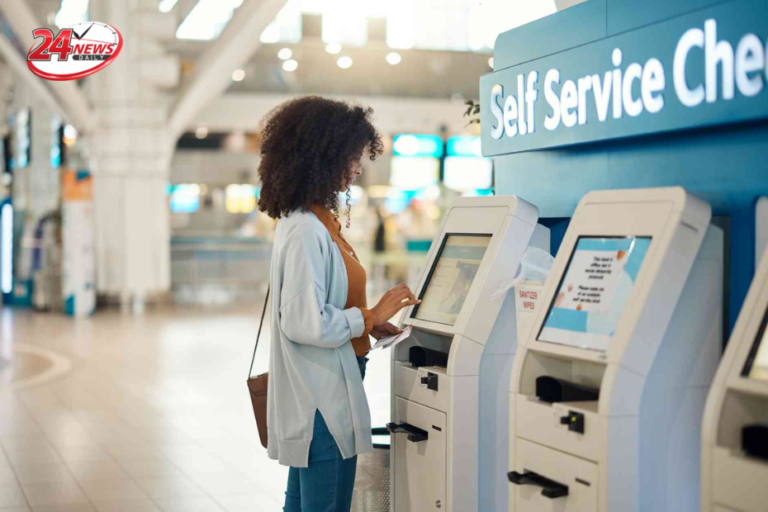Boosting Customer Satisfaction: The Impact of Healthcare Kiosks
A satisfied customer is vital to any business; healthcare is no exception. With the COVID-19 pandemic still lingering, many medical facilities have implemented systems to streamline patient check-ins and keep frontline workers safe from infectious patients.
Healthcare kiosks can play a major role in these efforts, allowing customers to perform several administrative functions conveniently.
Minimizing Waiting Times
In the healthcare sector, time is precious. A healthcare kiosk helps optimize workflow, minimize waiting times, and provide high customer service.
For example, kiosks enable patients to check in quickly and conveniently and offer telehealth options for consultations and treatment. Kiosks also streamline administrative tasks by automating processes, making it easier for staff to focus on patient care.
For example, kiosks allow employees to register new patients and update existing patient information, eliminating manual data entry errors and minimizing the time it takes to process paperwork.
Healthcare kiosks can also be used to conduct simple health diagnostic tests, which allows patients to monitor their health quickly and accurately. This will enable patients to control their health and make informed decisions about future medical treatment.
The impact of self-service kiosks in the healthcare industry is far-reaching. From streamlined patient check-ins to convenient appointment scheduling to secure and efficient payment processing, healthcare kiosks have revolutionized the industry.
Disruptive innovations often start off the radar screens of established players, but they gain momentum quickly. As the market for healthcare kiosks evolves, established players can capitalize on several competitive advantages.
These include a hard-to-dislodge position in valuable real estate, custodianship of health records, and consumers’ desire for familiar interfaces. In addition, they can invest in back-end integration and ongoing engagement with customers to ensure that the user experience is consistent across different touchpoints.
Patient Education
Healthcare kiosks can provide patient education to patients in several ways. In the emergency department, kiosks aid in patient triage by reliably collecting patient data and significantly reducing the time to identify new arrivals.
Healthcare kiosks verify coverage, eligibility, and patient deductibles in admitting departments, cutting worker data entry down. Stalls can also help manage drug treatment, guiding patients about their medical conditions and symptoms to optimize medication and increase adherence.
Health kiosks can offer various services, from basic screenings to telehealth consultations with physicians. Some of these are self-service, and some require human assistance.
These services include patient registration, blood pressure and weight measurements, and vision tests. Others may connect patients with a physician through videoconference or use diagnostic equipment such as stethoscopes, otoscopes, and dermoscopies.
The implementation of healthcare kiosks has been met with mixed reactions from consumers. For example, a news report highlighted how some patients exaggerated their symptoms to jump the queue at a patient self-check-in kiosk and avoid waiting in line for a nurse. Other concerns raised included privacy and hygiene issues.
These can be addressed by limiting the information displayed on screens, providing hand sanitizer and disinfecting equipment, and promoting no-touch interfaces like voice and gesture controls. However, healthcare kiosks are gaining popularity and could soon be as commonplace as old-school analog blood pressure machines.
Streamlined Administrative Tasks
In the fast-paced world of healthcare, administrative tasks can easily become overwhelming for staff. Automating these processes frees more time for medical professionals to focus on patient care and boost satisfaction.
Additionally, digital kiosks allow customers to access the necessary information without interacting with a human being, reducing wait times. Kiosks also help medical practices gather important feedback.
This data is vital for improving service and creating a more productive environment. Using automated digital kiosks allows medical professionals to conduct customer surveys in real-time and receive results immediately.
Lastly, healthcare kiosks can assist with screening. Screening programs are particularly popular in community settings, where patients can easily visit a booth and check their blood pressure or heart rate. Additionally, kiosks can screen for conditions like dementia, domestic violence/home safety, and mental health.
Despite the common misconception that kiosks take away the human element of healthcare, global case studies have shown that patients and employees are much happier when technology is used to streamline administrative tasks.
Using kiosks in healthcare can significantly cut down on wait times, increase revenue and efficiency, and improve customer satisfaction. Moreover, using self-service prescription kiosks helps reduce paperwork and allows patients to quickly input a few details and print their prescriptions.
Self-Service
When customers can help themselves, they feel empowered to manage their needs. This can boost satisfaction levels and reduce staff workloads. Kiosks are particularly effective in this sector, as they can be programmed to perform various tasks without human intervention.
For example, a healthcare kiosk allows visitors to check in with a unique ID, freeing receptionists to concentrate on other important matters. This solution also complies with infection control guidelines and can be linked to contact tracing.
Moreover, healthcare kiosks can also connect patients to physicians using videoconferencing software. This enables medical professionals to check on patients remotely, saving on travel costs. Telehealth kiosk allows users to capture and share data with their physician.
This can include blood pressure, weight, demographics, and more. Besides that, it can connect to a wide range of clinical measurement devices, including stethoscopes, otoscopes, and dermatoscopes.
Although some misconceptions exist that kiosks remove the human element from healthcare, many global case studies indicate that they improve customer satisfaction. Healthcare kiosks help medical personnel focus on assisting patients and improving the quality of care.
They also reduce the time spent on administrative tasks, allowing medical staff to meet with more patients. In addition, they can be used to streamline prescriptions, increasing efficiency and boosting patient satisfaction.


